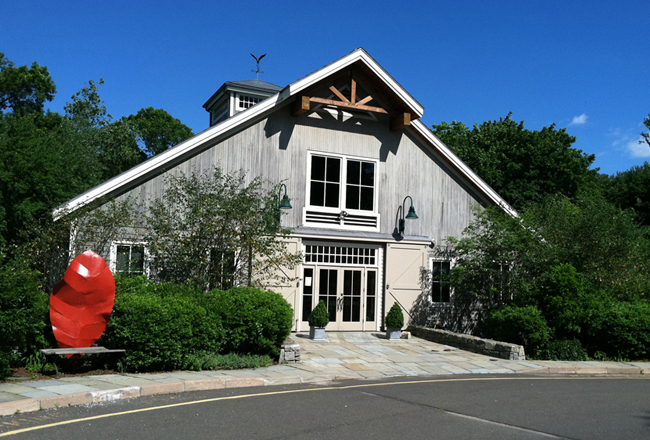When it comes to the aging population in America, the numbers are impressive: the 65-and-older sector is expected to more than double over the next 40 years as average life expectancies increase.
But while that data, from seniorliving.org and based in part on information from the U.S. Census Bureau, might be inspiring, another set of figures is considerably more sobering: according to The Alzheimer”™s Association, one in three seniors dies with that disease or another dementia; someone develops the disease every 65 seconds in this country; and while 5.7 million people are living with Alzheimer”™s today, that number is projected to rise to almost 14 million by 2050.

And while the need for assisted living facilities understandably continues to grow ”“ according to the National Center for Assisted Living, there are over 30,000 such communities, up from just 15,000 in 2008, and 1 million licensed beds in the U.S. ”“ so too does the need for memory care units. Designing the latter can, as one might expect, be quite different from building assisted living quarters for those not diagnosed with those conditions.
Some assisted living facilities have memory care units onsite, but that is not the case at Epoch Senior Living. Based in Waltham, Massachusetts, the company operates two distinct brands: Bridges, whose locations include Norwalk and Trumbull, is designed solely for memory care, while its “luxury” line Waterstone, whose locations will soon include Stamford, offers more traditional senior care.
“Our concept for memory care is a building that is 100 percent dedicated to patients with those issues,” said Epoch founder, president and CEO Laurence Gerber. “We feel that that approach is the best one for dealing with those patients.”
Separating memory-care patients from others is done “primarily for their safety,” Gerber said. “There is usually a risk of wandering, and they can hurt themselves unintentionally, which makes trying to care for them at home even more difficult. At home, the caregiver can easily become exhausted, especially if it”™s a spouse who”™s also a senior. If the spouse is very old or even deceased, the adult children basically have to give up their own lives to do it. And hiring 24-hour care in one”™s home is much more expensive than a memory-care unit.”
Epoch works with its own architect and other consultants in designing its Bridges facilities, Gerber said, “to create an environment that is both safe and allows people to have the highest quality of life they can, with a degree of independence and dignity.” Even and consistent lighting is key, he said, while carpets must avoid complex patterns that can “stimulate some confusion. A carpet with a distinct border that has an array of colors can adversely affect their depth perception, to the point where they think there”™s a step or even a hole there.”
Planning and designing memory care units is still something of a moving target, Gerber said: “It seems like there”™s always one more thing we hadn”™t thought of that needs to be done.”
Kelly McCarthy, corporate director of memory care and resident engagement at LCB Senior Living, agreed. “The more I think I know, the more I find out I don”™t know,” she said.
Headquartered in Norwood, Massachusetts, LCB has 22 high-end senior communities either open or under construction throughout New England and Pennsylvania, including the 104-unit Residence at Summer Street in Stamford; the 105-unit Residence at Selleck”™s Woods in Darien, expected to open in February, and The Residence at Westport, a 96-unit facility expected to break ground soon with an eye toward opening by mid-2020.
Along with lighting, McCarthy noted that color is extremely important to memory-care unit design. “There are three ”˜active”™ colors ”“ red, orange and yellow,” she said. “We”™re very mindful that those colors can get people up and moving ”“ but we also don”™t want to do them in large doses, which can be an aggravator.”
Such is the case with red, she said. “McDonald”™s is bursting with red and yellow, which are colors that can stimulate your salivary glands,” she said. “But there”™s also the idea that, ”˜I”™m seeing red”™ ”“ too much of anything can backfire.”
In the same vein, all LCB employees wear lime green uniforms ”“ a bright color that tends to last longer on aging eyes”™ spectrum.
“We avoid black,” McCarthy said. “It can look like a hole. I know some places use black to keep residents from going somewhere that”™s not safe or otherwise allowed, but we camouflage it by painting, say, the janitor”™s closet the same color as the wall.”
Similar care was taken with the recent completion of a $13 million renovation of the Atria Stamford senior living facility, which includes both assisted living and memory care “neighborhoods.”
“We started in the summer of 2017 and we”™re down to odds and ends,” said Gareth O”™Neill, project executive at South Coast Improvement Co., a design-build general contractor serving New England and the Mid-Atlantic states that is based in Marion, Massachusetts. “We revamped everything from the exterior, where we upgraded 48 balconies and built 12 new balconies that are completely glass-enclosed, to renovating the 137 resident rooms and the main lobby area.” That work included converting common space areas into two luxury penthouse apartments with an outside terrace decking system for assisted living residents.
Additionally, the project included a mechanical-electrical-plumbing upgrade to a number of common space areas such as the salon, commercial kitchens, theater, library, mail room, offices, fitness suite, dining room and town hall.
In addition to color and light considerations for memory-care residents, South Coast undertook a number of safety improvements, O”™Neill said. “You don”™t want people triggering locks or having alarms not going off.”
South Coast has worked primarily with assisted living facilities ”“ “the Stamford project is kind of our sweet spot,” O”™Neill said ”“ but is looking to expand further into the commercial real estate, education, and even medical marijuana dispensary spaces. “We really want to diversify our portfolio,” he said.





















